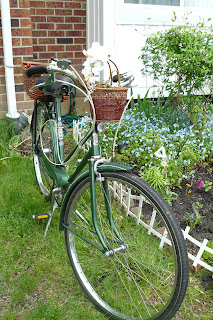 A bookstore is just like a bakery. You press your face up against the window and your eyes lock onto that creamy dreamy strawberry shortcake gleaming from its pedestal of sugary glory. Tart strawberries, a petulant red against whorls of airy cream and just a thin plane of glass between you and bliss. It's meant for you.Your brain sends jolts of electricity to your salivary glands, your mouth waters, your base instincts are ignited, and you must have it.
A bookstore is just like a bakery. You press your face up against the window and your eyes lock onto that creamy dreamy strawberry shortcake gleaming from its pedestal of sugary glory. Tart strawberries, a petulant red against whorls of airy cream and just a thin plane of glass between you and bliss. It's meant for you.Your brain sends jolts of electricity to your salivary glands, your mouth waters, your base instincts are ignited, and you must have it.In a bookstore, it's not all that different. An attractive book cover lures a reader with a pleasing colour palette, intriguing typeface and seamless graphic design. It's a careful synchronization of visual elements that aim to do two things: first, accurately represent the book and its contents and second, attract a potential reader.
So yes, I have sinned. I do judge books by their covers. When I'm strolling through displays in a coffee-tinged bookstore, I'm naturally drawn to certain books while others I might pass over without much thought. Superficial, maybe. But I'm a firm believer in how a cover--its design, its tactile presence--can make the reading experience a better one. Will a pretty cover fix a crappy novel? No. But it'll draw you in and make you give it a chance.
And while a book sits waiting on display, that's really all it's asking for--a chance! The moment you pick a book up off a display and give it a quick flip-through, a book designer is already trilling success. Because when you pick it up, you may skim the back cover, have a read through the inside flaps, skim the first few lines and then...and then you might buy it. And that--that is sweet, calculated success.
Of course, this is how a lot of unfortunate novels win muddled hearts. A promising cover is often just playing dress up for an unpleasant, vapid read. It can be a bit traumatic. A perfect cover sets up high expectations and then your hopes melt to oblivion once you open the book up and discover another vampire novel.
But the real tragedy is when an excellent novel is burdened with an ugly cover. It's such a waste--such bright enthusiastic little things lost, forlorn, and left behind because their covers are so revolting. You know the ones--the title in Times New Roman centered over a photograph of a mountain, or maybe a clock, or some other literal representation of something that appears in the book. And even if a novel is good enough to overcome this trial and make its way into welcoming hands through the weight of its reputation, there's nothing worse than looking forward to a good read only to be met with a hideous cover. It dampens the reading spirit.
To encourage attractive and alluring book covers, here's a look at a few books I recently purchased where the cover played a major role in my decision to pick it up and give it a chance:

Elizabeth Ruth's Ten Good Seconds of Silence. Design by Jennifer Scott. Front cover (face) photo by Leni Johnston.
This is a dreamy colour palette-- that acerbic yellow muted by a filter of smoky greens and set alight by a hazy smear of violet. The image has depth; you're looking through the grass, through bands of light and meeting an intent gaze. Many covers use a direct gaze to be confrontational, sometimes off putting, achieving a sense of unease. This gaze is soft, but probing. We're meeting her gaze, but she's looking into us. The typeface isn't specified, but it's clean and the serif-font has the effect of appearing grounded against this washy background.
Included at the bottom of the cover are the prizes the book has garnered. Always a clincher for a reader on the fence--"if it won an award, it has to be good...right?"

Ray Robertson's What Happened Later. Cover and text design: Gordon Robertson. Cover images: Shutterstock.
This purchase: 80% of my decision can be attributed to this bright and bold, glossy cover. The red and white colour palette is surprisingly cohesive, yet it achieves a jarring effect when placed against the close-up, diagonal photograph of a classic car. The cut-out shapes hold text in haphazard alignment and interesting fonts, both creating a sense of breathlessness. I'm pretty sure this is going to be a weird read.
Images (respectively): princedd, City of Toronto, and goodreads.













